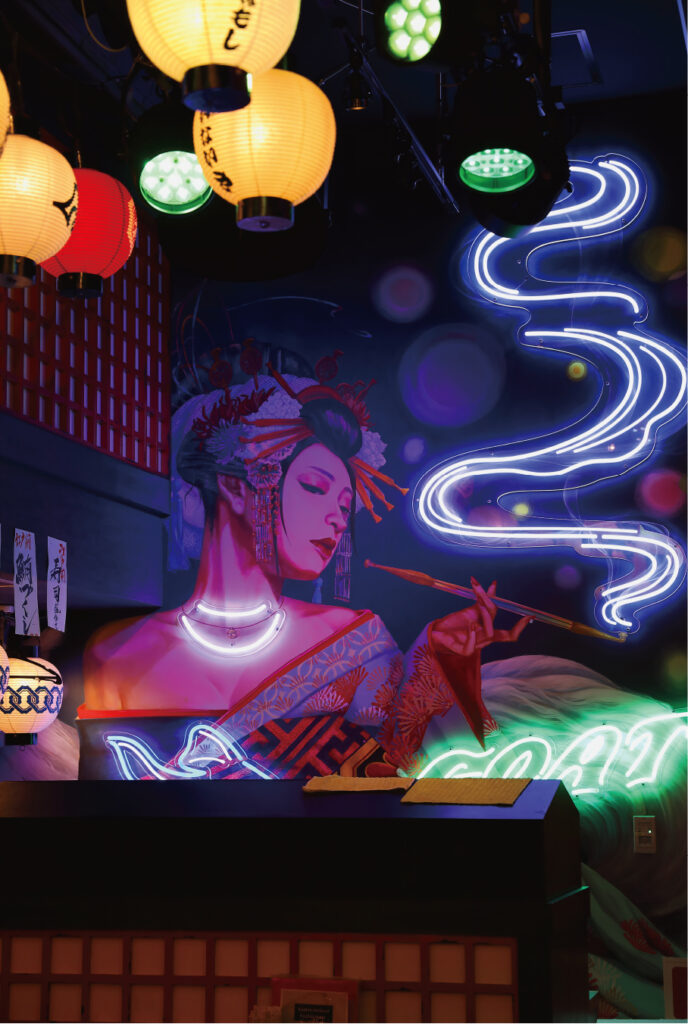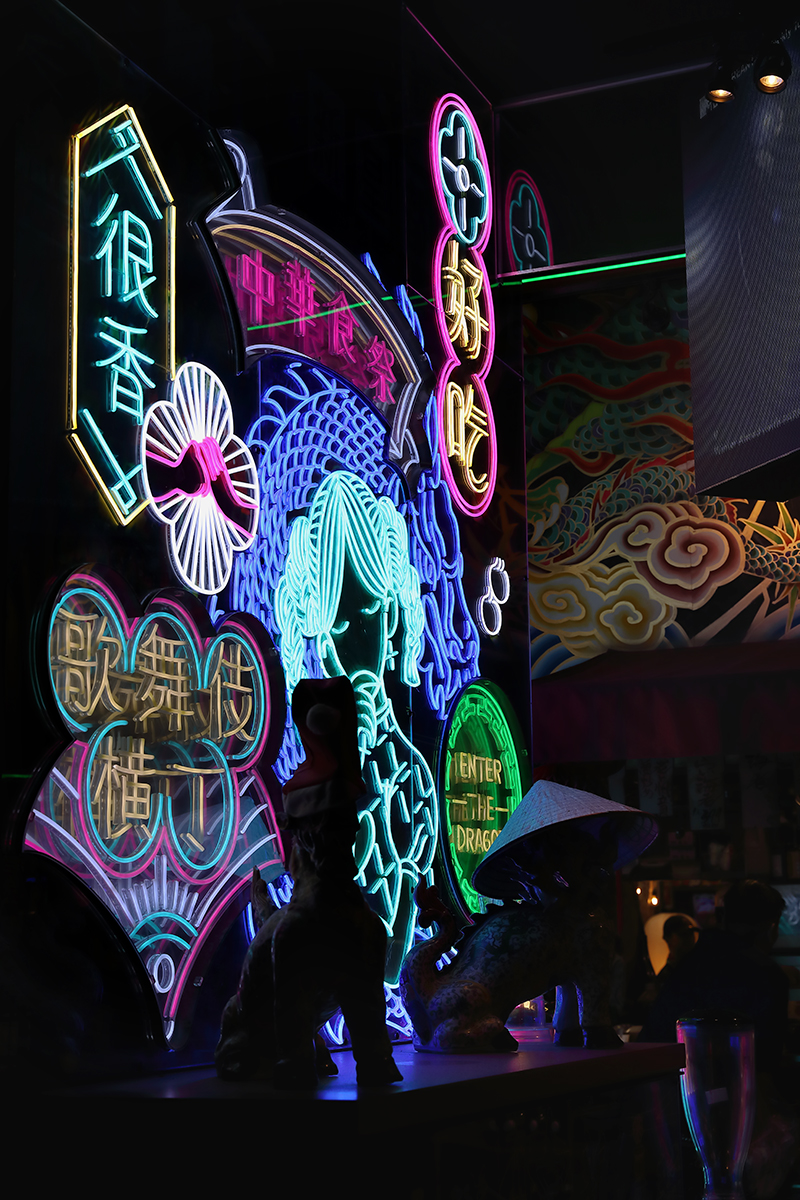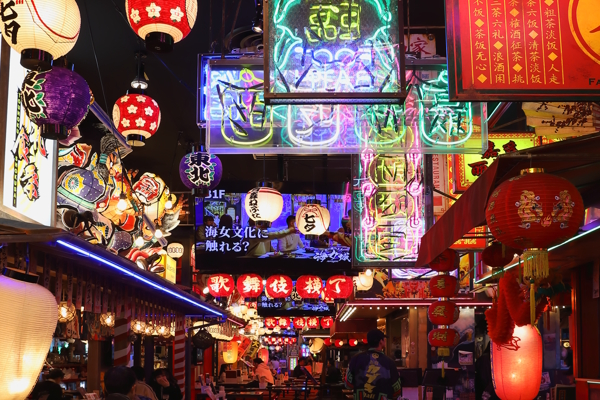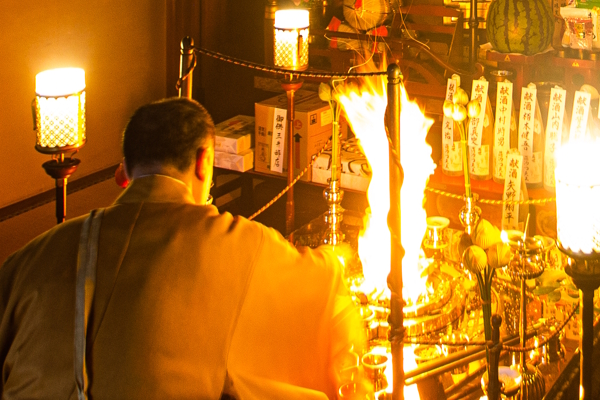インバウンドの中身。
Feature | 2025.1.24
訪日客は日本のどこを見ているのか、という話。
観光立国を目指す日本には、
その思惑どおり多くの外国人が観光にやってきている。
最多は韓国、そして中国、台湾とつづく。
欧米人も増えていて、浅草あたりを歩いていると
フランス語やイタリア語をよく耳にする。
こうして街が国際色豊かになる一方で
オーバーツーリズムという問題も起きている。
外国人観光客はどこへ行き、なにを見ているのか?
そこを探ってみた今号のyoff。
この号を読んでインバウンドについて
考えてもらえるとうれしいです。
What are visitors to Japan looking at?
Japan, aiming to become a tourism-driven nation, is attracting many foreign visitors,
with the largest numbers from South Korea,
China, and Taiwan.
Western tourists are also on the rise, and strolling through areas like Asakusa,
it’s not uncommon to hear French or Italian.
While this international vibrancy enriches cities, overtourism is emerging as a concern.
This edition of yoff explores
where tourists go and what they see,hoping to inspire thoughts on the impact of inbound tourism.

インバウンドが活気づいている。
円安の要因もあり2024年1月〜11月の訪日客は3337万人以上。通年で過去最高だった3188万2000人をすでに超えた。政府は2030年に6000万人を目指すといっている。
それでなくてもいま、オーバーツーリズムが問題になっているのに。
日本にやって来る外国人観光客はどういう過ごし方をしているのか。
インバウンドの中身を覗いてみた。
Inbound tourism is thriving, with over 33.37 million visitors from January to November 2024,
surpassing the previous annual record of 31.882 million.
The government has announced the goal of reaching 60 million visitors by 2030,
but overtourism is already a concern.
How are foreign tourists spending their time in Japan?
Let’s investigate inbound tourism.
世界中でオーバーツーリズムが止まらない。世界の国際観光客到着数は、2024年7月現在ですでにコロナ禍前の水準の96%となっている。観光地は国を超えて続々とやってくる想定外の観光客に悲鳴をあげ、各都市では様々な規制が始まっている。
例えば、バリ島はホテルの新規建設を一時停止すると発表。バルセロナはAirbnbなどで利用される住宅の短期賃貸を2028年まで全面禁止する予定。ベネチアは日帰り観光客から5ユーロの入場料を徴収。他にもマヨルカ島やリスボン、シチリア、パリ、さらにはエベレストにいたるまで、多くの観光地がオーバーツーリズムの影響で住環境、自然環境が損なわれ、物価や住宅価格が上がり、ゴミ問題が起き、憤慨した地元住民たちによるデモがおこなわれている。
日本でも外国人観光客が爆増。2024年10月の訪日外客数は3,312,000人で、前年同月比31,6%増。過去最速で3,000万人を突破している。
インバウンドに詳しいあるメディアによると、訪日客の人気スポットは京都や浅草などの有名観光地だけではないようだ。人気ランキングのベスト30を見ると秋葉原の「フクロウカフェ」や京都の「サムライ剣舞シアター」、大阪の「マジックバー フレンチドロップ」、三重県の「なばなの里」といった日本人でもあまり知らない場所が多くある。
外国人たちはどこで情報を仕入れて、何をしにそこへ行くのか。もしかしたらそこには、日本人が知らない、日本の楽しみ方があるのかもしれない。ということで訪日客に人気の「新宿カブキhall〜歌舞伎横丁」、「スナックツアー」、そして「玉蔵院」を訪ねてみた。すると、インバウンドの中身が少し見えるかも。
Overtourism continues to grow unchecked worldwide. As of July 2024, international tourist arrivals globally have already reached 96% of pre-pandemic levels. Overwhelmed destinations are responding with new regulations.
Bali has paused new hotel construction, Barcelona plans to ban short-term rentals until 2028, and Venice is charging day-trippers a 5-euro entry fee. Other destinations like Mallorca, Lisbon, Sicily, Paris, and Mount Everest face overtourism’s effects, including environmental damage, rising costs, waste issues, and local protests.
Japan too is experiencing a surge in foreign tourists. In October 2024, 3.312 million visitors arrived in Japan, a 31.6% increase compared to the same month the previous year. The number of visitors topped 30 million earlier in the year than ever before.
Inbound tourism media reveal that popular spots extend beyond famous destinations like Kyoto or Asakusa. The top 30 list includes lesser-known attractions such as Akihabara’s Owl Café, Kyoto’s Samurai Kembu Theater, Osaka’s Magic Bar French Drop, and Nabana no Sato in Mie Prefecture.
Where do visitors find their information, and what attracts them to these spots? Perhaps they’ve discovered ways to enjoy Japan unfamiliar even to locals. With this in mind, I explored popular tourist spots—Shinjuku Kabuki Hall – Kabuki Yokocho, a snack bar tour, and Gyokuzoin Temple—for insights into inbound tourism.




閲覧中の特集はこちら





